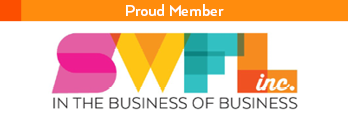Top 10 Ways to Secure Your Blog against Hacking
Every day, hackers are wreaking havoc in the blogging industry. They begin by analyzing several websites to establish the vulnerable ones. Once they detect security loopholes in a website, they go ahead to hack them. After gaining access to your website, hackers can do anything they want. Sometimes, they install malware or re-direct your blog's traffic to theirs, which can lead to loss of income, content theft, or destruction of your blog.
For this reason, bloggers should actively check the security statuses of their sites. If you notice particular unusual behavior on your website, move swiftly and rectify to avoid a security breach. People should not take hackers likely because they can easily cripple your blogging site. If they succeed in stealing your content, for example, they can push you out of business altogether.
Luckily, there are numerous actions that you can take to confirm that your blog is safe. The best Ten of these measures are;
For this reason, bloggers should actively check the security statuses of their sites. If you notice particular unusual behavior on your website, move swiftly and rectify to avoid a security breach. People should not take hackers likely because they can easily cripple your blogging site. If they succeed in stealing your content, for example, they can push you out of business altogether.
Luckily, there are numerous actions that you can take to confirm that your blog is safe. The best Ten of these measures are;
1) Strengthen Login Passwords
A weak password is a major security loophole that hackers can exploit. A strong password should be used to secure your blog. A strong password is not easy to discover by guessing or brute force. Any password without a combination of numbers, special characters, upper case, and lowercase, is considered weak. Also, a password should at least have eight characters and above.
It is recommended not to use personal information as your password. Such information includes names, emails, social security numbers, or dates of birth. Any personal data is mostly the first guess for hackers, and it is easy to source online. Also, it would help if you considered changing passwords frequently and not re-use them in other accounts.
It is recommended not to use personal information as your password. Such information includes names, emails, social security numbers, or dates of birth. Any personal data is mostly the first guess for hackers, and it is easy to source online. Also, it would help if you considered changing passwords frequently and not re-use them in other accounts.
2) you Must Buy SSL Certificate for Your Blog
SSL is an acronym for Secure Sockets Layer. It is a security protocol that establishes an encrypted and private communication between web browsers and web servers. An SSL certificate installed on the blog's web server assures about established secure sessions. This makes it impossible for hackers to acquire any blog information, like domain name, hostname, or server that can be used to hack the site.
Apart from securing the blogs’ certified websites have likely more traffic compared to others. People tend to feel more secure when accessing such sites. Also, the certificate will make Google give your blog a higher ranking than others. Now, the question you may have popped up on your mind is from where to purchase an SSL certificate? There are many SSL vendors including authorized resellers like ClickSSL that offers different types of SSL certificates at the lowest price.
For strong encryption and authenticate security, you can also consider going for Thawte Certificates depending upon site’s requirements. These are available in a variety of assurance and encryption levels, depending on the type of websites.
Apart from securing the blogs’ certified websites have likely more traffic compared to others. People tend to feel more secure when accessing such sites. Also, the certificate will make Google give your blog a higher ranking than others. Now, the question you may have popped up on your mind is from where to purchase an SSL certificate? There are many SSL vendors including authorized resellers like ClickSSL that offers different types of SSL certificates at the lowest price.
For strong encryption and authenticate security, you can also consider going for Thawte Certificates depending upon site’s requirements. These are available in a variety of assurance and encryption levels, depending on the type of websites.
3) Backup Your Files on Daily Basis
When it comes to security, having a file backup is a crucial tip. Incase your site is hacked and content edited or wiped out, for example, you won't have to worry about restoring it. You pull your most recent back up and have your entire blog again.
To keep backups, cyber security experts recommend a 3-2-1 back up rule. This rule advocates keeping three backup copies, using two different types of media and 1copy at an off-site premise.
To keep backups, cyber security experts recommend a 3-2-1 back up rule. This rule advocates keeping three backup copies, using two different types of media and 1copy at an off-site premise.
4) Stay On Top of Updates
Outdated software is a security loophole. Keeping your system and application software updated helps mitigate the risk of being hacked. Software manufacturers carry out updates to seal the vulnerabilities in their products. Continued use of outdated software versions opens gaping security holes that hackers can exploit. The following are a few steps you can take to stay updated;
- Allow your device to carry out automatic updates.
- Ensure that your browser automatic security update icon is enabled.
- Keep all browser plugins updated.
- Frequently check your software manufacturer websites for possible updates.
5) Never Advertise Your Blog Version to the World
Publishing your blog version exposes it to attackers. From the version, of your blog, the hackers can assess your vulnerability based on its properties. They can tell the strengths and weaknesses of the technology and quickly become the target. For example, WordPress sites have their version numbers exposed. To secure your site, always delete this information from everywhere, including in the readme.html file in the installation guide.
6) Use Anti-Virus Protection & Firewall
The use of Anti-virus is a commonly used practice to stop malicious attacks. Anti-Virus software blocks viruses and other malware from accessing or modifying data on your device. Firewall use to protect data against attacks is another vital security tip. With their scanning capability, they help to detect and filter viruses, hackers, and other malicious attempts through the internet. Both Windows and Mac operating systems have in build firewalls known as windows and Mac Firewalls respectively. Also, your network router should have a firewall to prevent attacks via the internet.
7) Learn About Phishing Scams
Phishing is a type of cyber-attack that uses email as their weapon. The attacker sends disguised emails to try and make the recipient believe that it is something genuine, and they need it. For instance, it can be a request from the bank requesting credentials, a note from a workmate, or a link to download an attachment. If you swallow the bate and fill in the requested information, it is sent to a hacker. The attachment links also contain malware that infects your device. About 90% of cases of ransom ware are as a result of phishing. Below mentioned steps will save you from falling victim to these scams.
- Before filling in any sensitive information, consider checking URL spellings on the email.
- Avoid opening emails from unknown people.
- Check the safety of the links before clicking.
- If you receive a suspicious email from a known sender, consider contacting them via other means before replying.
8) Review Your Online Accounts & Credit Reports Regularly for Changes
Cybercriminals use different ways to access personal information. It is prudent to keep reviewing your online accounts and credit reports. In one of the biggest security breaches in 2017, Equifax announced that more than 143 million consumer personal data leaked. With such information, hackers can easily use it to their advantage. People are using Credit freeze as a means to protect their data and identity. This new security measure allows consumers to use personal identification numbers to transact online securely.
9) Setup Your Own Google Authorship
Whenever there is a content duplication, search engines decide which content receives a higher ranking based on the publication date. However, this may not always work if a blog with higher Google ranking copies of the content. In such a case, the stolen content will continue to benefit the wrong person. Google authorship comes to stamp ownership authority. Even if someone steals your content and your authorship is confirmed, their website won't rank higher than yours. The steps to create Google authorship are as follows;
- Sign up for Google+ personal page
- In the profile settings section, under contributor, add your blog link.
- Install the blog SEO plugin.
- Navigate to user’s section, then profile
- Scroll down and select a contact info
- Add your Google+ profile link.
10) Use only trusted plugins for your blog.
Plugins in a blog increase the attack surface. To make sure that your blog security is not compromised, install only trusted plugins and keep them updated. A trustworthy plugin should have the following qualities;
- Have more number of downloads. You can tell a plugin is trustworthy from its popularity. Bad plugins never have many downloads.
- Should have good ratings. At least have more 5-star than one-star ratings.
- Excellent reviews from people who have interacted with it.
Conclusion
Applying the above measures on your blog will guarantee your blog security to a great extent. However, making sure that your blog is secure today does not make it immune to hacking forever. This means that for your blog to be safe, you must be alert every time. As hackers grind on how to bring your site down, you should also be implementing more radical measures to secure your blog.



